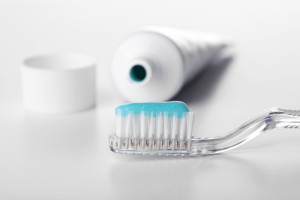How To Pick A Toothbrush
Picking a toothbrush sounds easy, right? But if you’ve ever walked down the toothbrush aisle of your local drug store, you know how easy it is to get confused by all the choices.
 Some toothbrushes promise fresh breath, deep cleaning and even teeth whitening. Others are specially designed for orthodontics or dentures. While these special features are enticing, it’s best to ask your dentist if they’re right for you or if you need them at all. There are, however, some toothbrush basics that you need to know — these tips should make your search for a toothbrush a whole lot easier!
Some toothbrushes promise fresh breath, deep cleaning and even teeth whitening. Others are specially designed for orthodontics or dentures. While these special features are enticing, it’s best to ask your dentist if they’re right for you or if you need them at all. There are, however, some toothbrush basics that you need to know — these tips should make your search for a toothbrush a whole lot easier!
What to Look for in a Toothbrush
The right toothbrush can help turn bad oral hygiene habits into good oral hygiene habits. Without daily brushing and flossing, your teeth and gums may become especially vulnerable to tooth decay, dental plaque, dental tartar, even gum disease. Don’t let that happen — use these guidelines to help you pick a toothbrush; the more you like your toothbrush, the more likely you are to brush.
Remember: the Softer the better. It might seem like a toothbrush with stiff bristles is the right choice — after all, many of your household brushes probably have rigid bristles, making cleaning faster and easier. But the opposite is true when it comes to picking a toothbrush.
And the reason why is simple: Softer bristles are easier on your gums. When you brush, you want to clean your teeth, not make your gums bleed. A toothbrush with stiff bristles is more likely to cause bleeding gums. However, don’t pick a toothbrush that’s labeled “soft” unless your dentist recommends it; choose a “medium” one instead.
Go nylon, not natural. There’s a whole slew of natural dental products available that are environmentally friendly. You may have even heard about something called a “Natural Toothbrush” with bristles made from the root of an Araak tree. Other types of natural toothbrushes have brown bristles that are reportedly softer than nylon bristles.
While you may be curious to try a natural toothbrush, keep in mind that there has been little research done in the U.S. on their effectiveness (or harmfulness). Natural toothbrushes may also cost more and wear out faster than standard toothbrushes. Until there’s more information about natural toothbrushes, it’s probably best to stick to an ADA-recommended toothbrush with medium-soft, nylon bristles.
Get a heads up. When it comes to a toothbrush head, you might think that bigger is better. That’s not always the case. If you have a small mouth, a toothbrush with a big head might make it difficult to angle your toothbrush to brush hard-to-reach areas. Go for something that complements the size of your mouth.
Choose a handle with care. The handles of toothbrushes are usually colorful, sometimes translucent or even glittery. But don’t be fooled into thinking that “bright and shiny” is all you need. What you should really look for is a toothbrush handle that feels comfortable in your hand and is easy to maneuver. Also look for a non-slip surface, especially if you have arthritis.
Don’t forget: After daily use, your toothbrush can lose its effectiveness and even become a breeding ground for germs, fungus and bacteria. Who wants that? To get the most out of your toothbrush, replace it frequently — at least every 1-3 months. And if you recently had a cold or infection, you may have transferred germs to your toothbrush so be sure to use a new toothbrush.
Leave a reply










